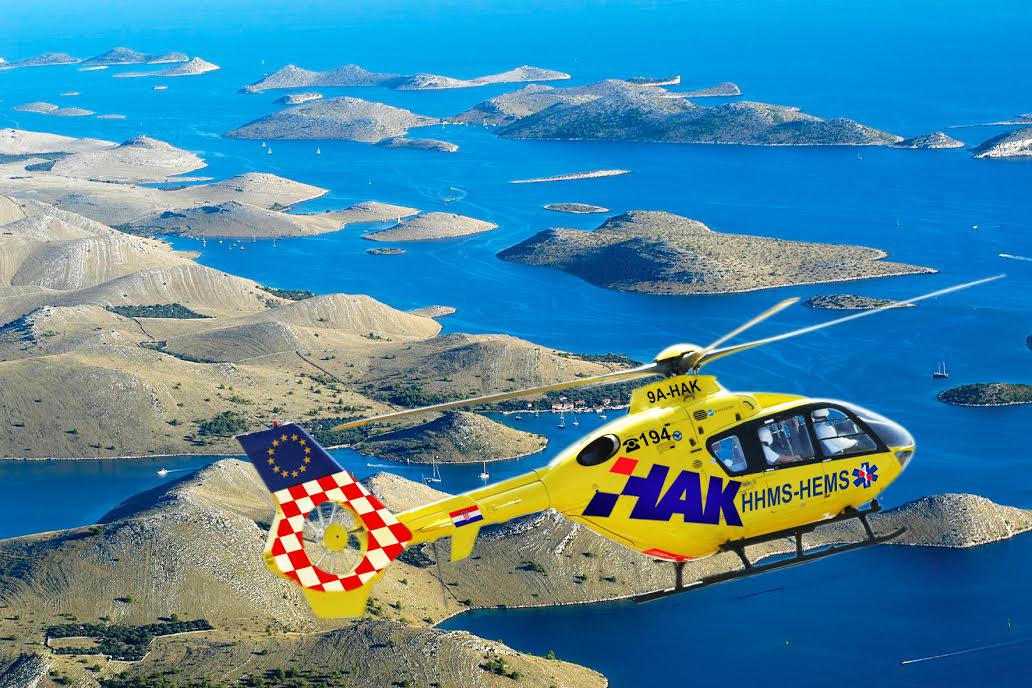TCN caught up with the faction behind bringing Helicopter Emergency Medical Service (HEMS) to Croatia.
First things first, what is HEMS?
Helicopter Emergency Medical Service, which is known as HHMP (Helikopterska hitna medicinska pomoć) in Croatia, uses helicopters to move patients to and from healthcare facilities and accident scenes. From a medical point of view, HEMS is an ambulance with a propeller, but in fact it is part of civil aviation. Specifically, HEMS works under the slogan “an emergency doctor of medicine should be able to reach the patient as soon as possible by helicopter, and not the other way around”.
HEMS came to fruition in Germany in 1968 when 20,000 people died during traffic accidents in the country. In Germany today there are 77 bases exclusively for the purpose of HEMS. Due to the rapid development of this kind of medical assistance, there has been a large drop in the number of severe consequences due to faster intervention of treatment by helicopter.
The faction behind HEMS in Croatia (known as HHMP from this point on) stresses that this is a project that is essential to the Croatian territory, especially during the summer tourist season on the islands and during the winter season in the mountains when the areas are densely populated. Unfortunately, this service is still only performed by the Croatian Air Force who uses medically unequipped Russian Mi-8 helicopters, with the services only performed on the coastal region of Croatia.

How does it work?
The HHMP service must meet the standard that the patient is at the hospital within 60 minutes, regardless of where the patient is located. This is the so called “Golden Hour“ - the critical hour following traumatic injury sustained by a casualty or medical emergency, during which there is the highest likelihood that prompt medical treatment will prevent death and serious disability. This is achieved by transporting a doctor on the helicopter to care for the patient, informing the hospital what the patient needs, then taking the next appropriate medical steps.
The helicopter is deployed so that it will reach the patient within 20 minutes, depending on where the helicopter is located. For example, Croatia would need 5 helicopter bases to reach the patient within 20 minutes - and in order to achieve the medical “Golden Hour” - it is necessary to cover all of the bases on the Croatian territory, from the islands to the mountains.
In addition, HHMP will work in all weather conditions, including harsh winter conditions. It is important to note that HHMP will not fly when military or civil aircraft cannot fly.
Currently, Croatia uses existing military Mi-8 helicopters for emergency medical services. Since 2016, Croatia has used one police helicopter (EC 135) - which is equipped without proper medical equipment - in Dubrovnik during the summer.

What needs to happen in order to implement HHMP in Croatia?
Firstly, the HHMP faction stresses that this is a question for Croatian politicians - are they satisfied with how emergency medical services are operating in Croatia presently?
When looking at the numbers, HHMP states that it will cost roughly 7.5 to 8 million euros per year to implement for 5 helicopters. Considering there are over 300 traffic deaths per year, and the fact that 50% of people die from brain or heart stroke in Croatia each year, this is a small price to pay.
It is no surprise that Croatian tourism is rising, both in the summer and winter months, which encourages visits to both the islands and the mountains. In an effort to protect the citizens and foreign visitors to Croatia at all times in case of medical emergencies, HHMP urges Croatian politicians to take a closer look at bringing helicopter emergency medical services to the country.

You can find out more information on the HHMP Facebook page here.


